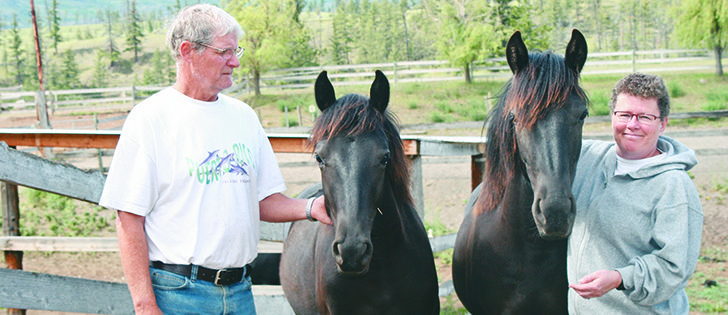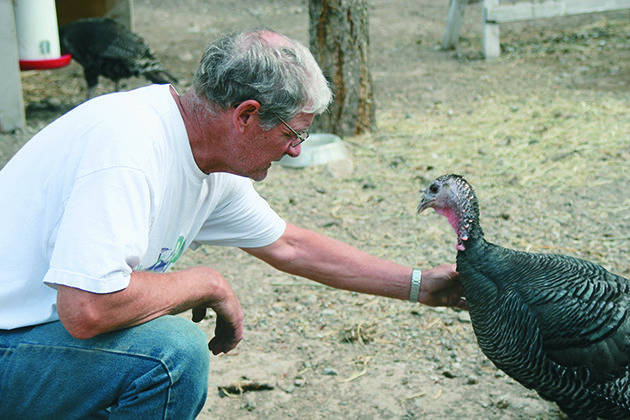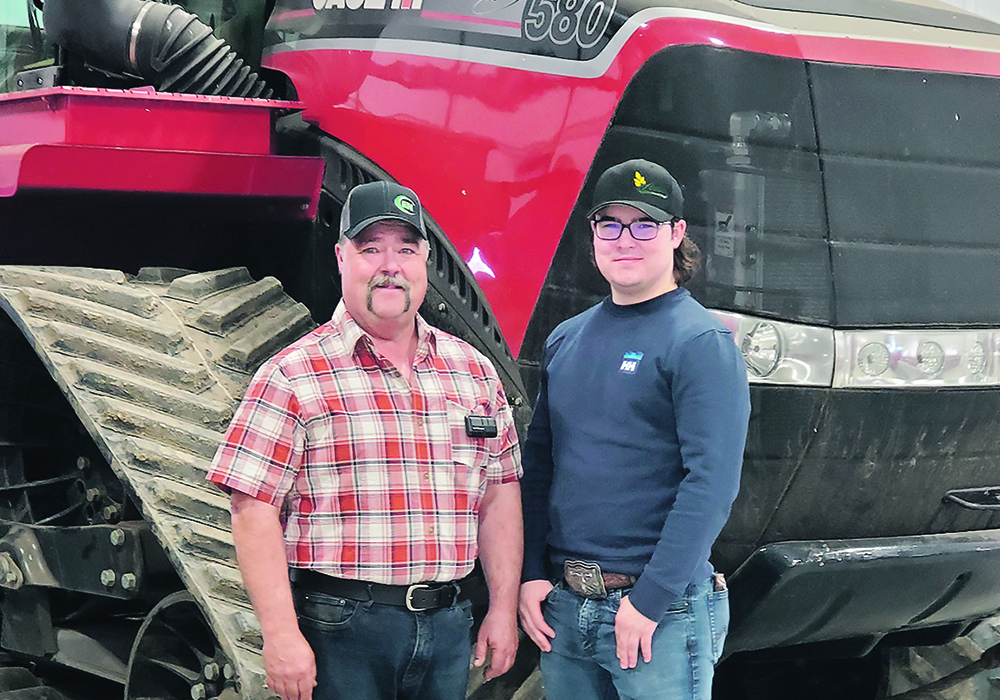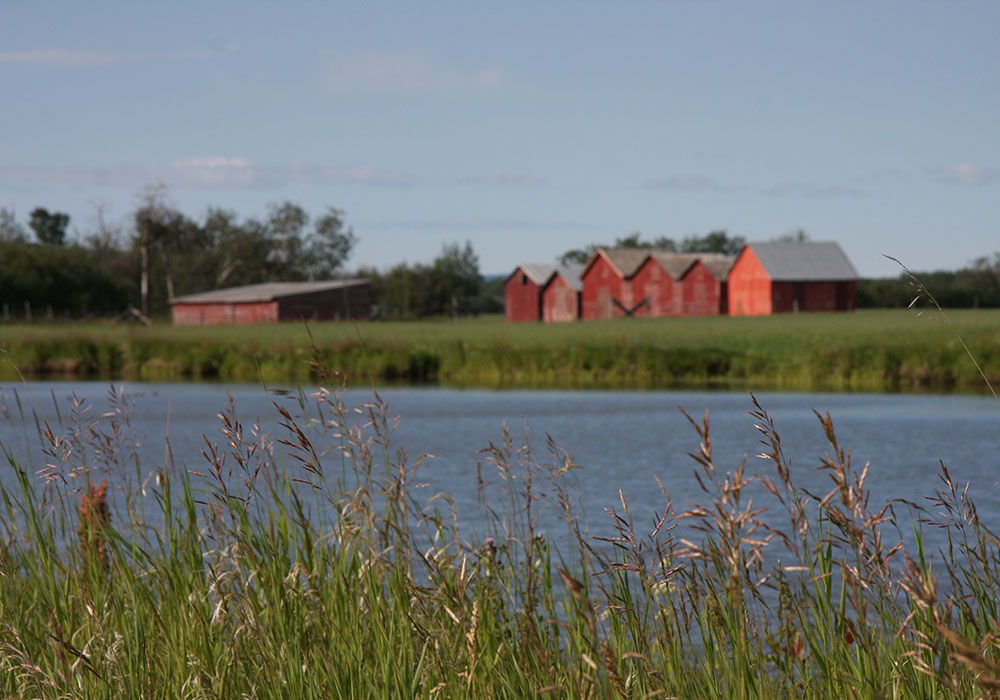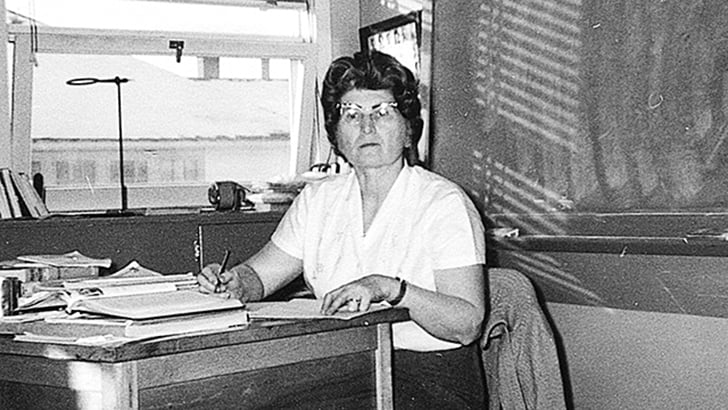The horses, chickens and turkeys raised by Jim and Yvonne Hillsden aren’t found on the typical farm
CHERRY CREEK, B.C. — A select group of farmers are doing their part to preserve rare breeds of livestock and poultry.
Jim and Yvonne Hillsden are among them.
Farming near Kamloops, B.C., on 120 acres of hillsides, they are maintaining a herd of 10 Canadian horses and flocks of Chantecler chickens and Ridley Bronze turkeys.
All three breeds are of Canadian origin but the populations are shrinking, reports Rare Breeds Canada, an organization that works to preserve heritage livestock.
Yvonne is a registered dietician and Jim is a retired heavy-duty mechanic.
Read Also

Producer profits remain under significant pressure
Manitoba farmers are facing down a double hit of high input costs, like fertilizer, and low grain prices as they harvest their next crop.
Jim has maintained the farm even as they face potential damage from forest fires, insects and the mountain pine beetle that killed thousands of trees on their property.
“If you are doing this, you have to have a background in mechanics, irrigation and wiring,” he said.
Jim raised Thoroughbred horses but after an accident where one of his horses was killed in a highway accident, the couple decided to look for a new breed.
Their first exposure to the Canadian horse was at Spruce Meadows near Calgary. It impressed them with its calm nature amidst the hubbub of a big show.
They found no breeders in British Columbia, and after finding a filly in Quebec, they started breeding in 1995.
Their Cherry Creek Canadians have joined a small group of concerned breeders. The Canadian horse was declared an official symbol of Canada in 2002.
“They are not necessarily going extinct but we are going that way,” Yvonne said.
They want to encourage people who have breeding mares to get them in foal once and replace each female.
“In the last eight years, foal production has dropped catastrophically. Prior to 2008, we were producing 500 to 600 foals a year so the breed could go up. It has dropped continuously for the last two to three years to below the 200 mark,” she said.
The recession of 2008 hit the horse market hard and many Canadian owners decided not to breed their mares.
There are approximately 2,500 breeding mares left but probably only 1,000 are capable of reproducing. The resulting foals should also be registered with Canadian Livestock Records.
The Hillsdens have two crossbreds, three mares and three stallions as well as two youngsters that have already been sold.
The Chantecler chickens followed the horses. They were showing their Canadians at the historic O’Keefe Ranch near Vernon, B.C., when someone asked them to bring their rare chickens back the next time they visited Quebec to buy horses.
Monks at the Abbey of Notre-Dame du Lac in Quebec developed the Chantecler in the early 20th century. The resulting white bird was a hardy creature suitable for egg and meat production.
Yvonne brought eggs from Quebec, kept some for herself and gave some to the O’Keefe ranch.
“It was kind of fortuitous because in 2008 the horse market crashed and we did OK selling heritage poultry,” she said.
They have a small incubator to hatch eggs. They have about 50 birds for themselves for meat, eggs and breeding while chicks are sold off the farm to other interested breeders.
The Ridley Bronze turkeys were the next acquisition.
The breed goes back to the 1940s in Saltcoats, Sask. John Richardson wanted a hardy, calm, good meat producing bird and developed his own from stock from across Canada and the United States.
The Ridley family worked for him and two members started their own turkey operations. George Ridley had them for about 20 years and they eventually ended up at the University of Saskatchewan where they were named the Ridley Bronze.
These black birds with hues of blue and bronze were later replaced with the big-breasted hybrid white turkey.
“Production time for one of these turkeys from the time it is hatched to processed is about seven months and a white hybrid will be done in half the time,” Yvonne said.
They are dedicated to preserving the genetics because hybrid birds do not breed naturally.
The average owner keeps a small flock but they are prolific layers and they are able to sell the eggs to others interested in raising their own birds.
“People come and buy a turkey from us for $75 and they just love them. They say they are so good but we don’t sell a lot,” Jim said.
They can get up to 90 eggs per hen but preserving the flock takes dedication.
They almost lost their two breeding toms when a neighbour’s dog was suspected of mauling them.
A veterinarian performed surgery to save them. One bird had to have a wing amputated, which was worrisome because toms need their wings for balance when they breed.
“Both survived and both went on to be quite prolific breeders. I think it speaks volumes for their hardiness and calmness,” Yvonne said.




